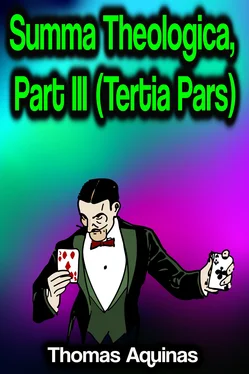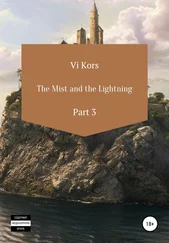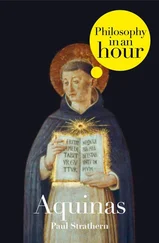I answer that, As was said (AA. 10, 11), the term "Man" placed in the reduplication may refer either to the suppositum or to the nature. Hence when it is said: "Christ as Man is a person," if it is taken as referring to the suppositum, it is clear that Christ as Man is a person, since the suppositum of human nature is nothing else than the Person of the Son of God. But if it be taken as referring to the nature, it may be understood in two ways. First, we may so understand it as if it belonged to human nature to be in a person, and in this way it is true, for whatever subsists in human nature is a person. Secondly it may be taken that in Christ a proper personality, caused by the principles of the human nature, is due to the human nature; and in this way Christ as Man is not a person, since the human nature does not exist of itself apart from the Divine Nature, and yet the notion of person requires this.
Reply Obj. 1: It belongs to every man to be a person, inasmuch as everything subsisting in human nature is a person. Now this is proper to the Man Christ that the Person subsisting in His human nature is not caused by the principles of the human nature, but is eternal. Hence in one way He is a person, as Man; and in another way He is not, as stated above.
Reply Obj. 2: The "individual substance," which is included in the definition of a person, implies a complete substance subsisting of itself and separate from all else; otherwise, a man's hand might be called a person, since it is an individual substance; nevertheless, because it is an individual substance existing in something else, it cannot be called a person; nor, for the same reason, can the human nature in Christ, although it may be called something individual and singular.
Reply Obj. 3: As a person signifies something complete and self-subsisting in rational nature, so a hypostasis, suppositum, and being of nature in the genus of substance, signify something that subsists of itself. Hence, as human nature is not of itself a person apart from the Person of the Son of God, so likewise it is not of itself a hypostasis or suppositum or a being of nature. Hence in the sense in which we deny that "Christ as Man is a person" we must deny all the other propositions.
Question 17. Of Christ's Unity Of Being (In Two Articles)
We must now consider what pertains to Christ's unity in common. For, in their proper place, we must consider what pertains to unity and plurality in detail: thus we concluded (Q. 9) that there is not only one knowledge in Christ, and it will be concluded hereafter (Q. 35, A. 2) that there is not only one nativity in Christ.
Hence we must consider Christ's unity (1) of being; (2) of will; (3) of operation.
Under the first head there are two points of inquiry:
(1) Whether Christ is one or two?
(2) Whether there is only one being in Christ? _______________________
FIRST ARTICLE [III, Q. 17, Art. 1]
Whether Christ Is One or Two?
Objection 1: It would seem that Christ is not one, but two. For Augustine says (De Trin. i, 7): "Because the form of God took the form of a servant, both are God by reason of God Who assumed, yet both are Man by reason of the man assumed." Now "both" may only be said when there are two. Therefore Christ is two.
Obj. 2: Further, where there is one thing and another there are two. Now Christ is one thing and another; for Augustine says (Enchiridion xxxv): "Being in the form of God . . . He took the form of a servant . . . being both in one; but He was one of these as Word, and the other as man." Therefore Christ is two.
Obj. 3: Further, Christ is not only man; for, if He were a mere man, He would not be God. Therefore He is something else than man, and thus in Christ there is one thing and another. Therefore Christ is two.
Obj. 4: Further, Christ is something that the Father is, and something that the Father is not. Therefore Christ is one thing and another. Therefore Christ is two.
Obj. 5: Further, as in the mystery of the Trinity there are three Persons in one Nature, so in the mystery of the Incarnation there are two natures in one Person. But on account of the unity of the Nature, notwithstanding the distinction of Person, the Father and Son are one, according to John 10:30: "I and the Father are one." Therefore, notwithstanding the unity of Person, Christ is two on account of the duality of nature.
Obj. 6: Further, the Philosopher says (Phys. iii, text. 18) that "one" and "two" are predicated denominatively. Now Christ has a duality of nature. Therefore Christ is two.
Obj. 7: Further, as accidental form makes a thing otherwise ( alterum ) so does substantial form make another thing ( aliud ) as Porphyry says (Praedic.). Now in Christ there are two substantial natures, the human and the Divine. Therefore Christ is one thing and another. Therefore Christ is two.
On the contrary, Boethius says (De Duab. Nat.): "Whatever is, inasmuch as it is, is one." But we confess that Christ is. Therefore Christ is one.
I answer that, Nature, considered in itself, as it is used in the abstract, cannot truly be predicated of the suppositum or person, except in God, in Whom "what it is" and "whereby it is" do not differ, as stated in the First Part (Q. 29, A. 4, ad 1). But in Christ, since there are two natures, viz. the Divine and the human, one of them, viz. the Divine, may be predicated of Him both in the abstract and in the concrete, for we say that the Son of God, Who is signified by the word Christ, is the Divine Nature and is God. But the human nature cannot be predicated of Christ in the abstract, but only in the concrete, i.e. as it is signified by the suppositum. For we cannot truly say that "Christ is human nature," because human nature is not naturally predicated of its suppositum. But we say that Christ is a man, even as Christ is God. Now God signifies one having the Godhead, and man signifies one having manhood. Yet one having manhood is differently signified by the word "man" and by the word "Jesus" or "Peter." For this word "man" implies one having manhood indistinctly, even as the word "God" implies indistinctly one having the Godhead; but the word "Peter" or "Jesus" implies one having manhood distinctly, i.e. with its determinate individual properties, as "Son of God" implies one having the Godhead under a determinate personal property. Now the dual number is placed in Christ with regard to the natures. Hence, if both the natures were predicated in the abstract of Christ, it would follow that Christ is two. But because the two natures are not predicated of Christ, except as they are signified in the suppositum, it must be by reason of the suppositum that "one" or "two" be predicated of Christ.
Now some placed two supposita in Christ, and one Person, which, in their opinion, would seem to be the suppositum completed with its final completion. Hence, since they placed two supposita in Christ, they said that God is two, in the neuter. But because they asserted one Person, they said that Christ is one, in the masculine, for the neuter gender signifies something unformed and imperfect, whereas the masculine signifies something formed and perfect. On the other hand, the Nestorians, who asserted two Persons in Christ, said that Christ is two not only in the neuter, but also in the masculine. But since we maintain one person and one suppositum in Christ, as is clear from Q. 2, AA. 2, 3, it follows that we say that Christ is one not merely in the masculine, but also in the neuter.
Reply Obj. 1: This saying of Augustine is not to be taken as if "both" referred to the predicate, so as to mean that Christ is both; but it refers to the subject. And thus "both" does not stand for two supposita, but for two words signifying two natures in the concrete. For I can say that "both, viz. God and Man, are God" on account of God Who assumes; and "both, viz. God and Man," are Man on account of the man assumed.
Читать дальше












